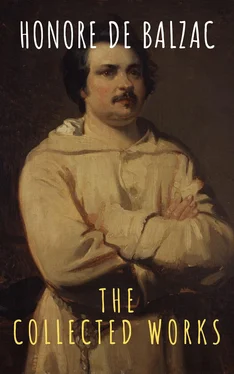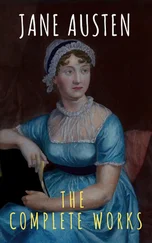Perhaps it will be well, for the sake of those who have never seen that city, to say a few words as to the present destination of the Latournelle family, — the head clerk being included in the latter term. Ingouville is to Havre what Montmartre is to Paris, — a high hill at the foot of which the city lies; with this difference, that the hill and the city are surrounded by the sea and the Seine, that Havre is helplessly circumscribed by enclosing fortifications, and, in short, that the mouth of the river, the harbor, and the docks present a very different aspect from the fifty thousand houses of Paris. At the foot of Montmartre an ocean of slate roofs lies in motionless blue billows; at Ingouville the sea is like the same roofs stirred by the wind. This eminence, or line of hills, which coasts the Seine from Rouen to the seashore, leaving a margin of valley land more or less narrow between itself and the river, and containing in its cities, its ravines, its vales, its meadows, veritable treasures of the picturesque, became of enormous value in and about Ingouville, after the year 1816, the period at which the prosperity of Havre began. This township has become since that time the Auteuil, the Ville-d’Avray, the Montmorency, in short, the suburban residence of the merchants of Havre. Here they build their houses on terraces around its ampitheatre of hills, and breathe the sea air laden with the fragrance of their splendid gardens. Here these bold speculators cast off the burden of their counting-rooms and the atmosphere of their city houses, which are built closely together without open spaces, often without court-yards, — a vice of construction with the increasing population of Havre, the inflexible line of the fortifications, and the enlargement of the docks has forced upon them. The result is, weariness of heart in Havre, cheerfulness and joy at Ingouville. The law of social development has forced up the suburb of Graville like a mushroom. It is to-day more extensive than Havre itself, which lies at the foot of its slopes like a serpent.
At the crest of the hill Ingouville has but one street, and (as in all such situations) the houses which overlook the river have an immense advantage over those on the other side of the road, whose view they obstruct, and which present the effect of standing on tip-toe to look over the opposing roofs. However, there exist here, as elsewhere, certain servitudes. Some houses standing at the summit have a finer position or possess legal rights of view which compel their opposite neighbors to keep their buildings down to a required height. Moreover, the openings cut in the capricious rock by roads which follow its declensions and make the ampitheatre habitable, give vistas through which some estates can see the city, or the river, or the sea. Instead of rising to an actual peak, the hill ends abruptly in a cliff. At the end of the street which follows the line of the summit, ravines appear in which a few villages are clustered (Sainte-Adresse and two or three other Saint-somethings) together with several creeks which murmur and flow with the tides of the sea. These half-deserted slopes of Ingouville form a striking contrast to the terraces of fine villas which overlook the valley of the Seine. Is the wind on this side too strong for vegetation? Do the merchants shrink from the cost of terracing it? However this may be, the traveller approaching Havre on a steamer is surprised to find a barren coast and tangled gorges to the west of Ingouville, like a beggar in rags beside a perfumed and sumptuously apparelled rich man.
In 1829 one of the last houses looking toward the sea, and which in all probability stands about the centre of the Ingouville to-day, was called, and perhaps is still called, “the Chalet.” Originally it was a porter’s lodge with a trim little garden in front of it. The owner of the villa to which it belonged, — a mansion with park, gardens, aviaries, hot-houses, and lawns — took a fancy to put the little dwelling more in keeping with the splendor of his own abode, and he reconstructed it on the model of an ornamental cottage. He divided this cottage from his own lawn, which was bordered and set with flower-beds and formed the terrace of his villa, by a low wall along which he planted a concealing hedge. Behind the cottage (called, in spite of all his efforts to prevent it, the Chalet) were the orchards and kitchen gardens of the villa. The Chalet, without cows or dairy, is separated from the roadway by a wooden fence whose palings are hidden under a luxuriant hedge. On the other side of the road the opposite house, subject to a legal privilege, has a similar hedge and paling, so as to leave an unobstructed view of Havre to the Chalet.
This little dwelling was the torment of the present proprietor of the villa, Monsieur Vilquin; and here is the why and the wherefore. The original creator of the villa, whose sumptuous details cry aloud, “Behold our millions!” extended his park far into the country for the purpose, as he averred, of getting his gardeners out of his pockets; and so, when the Chalet was finished, none but a friend could be allowed to inhabit it. Monsieur Mignon, the next owner of the property, was very much attached to his cashier, Dumay, and the following history will prove that the attachment was mutual; to him therefore he offered the little dwelling. Dumay, a stickler for legal methods, insisted on signing a lease for three hundred francs for twelve years, and Monsieur Mignon willingly agreed, remarking, —
“My dear Dumay, remember, you have now bound yourself to live with me for twelve years.”
In consequence of certain events which will presently be related, the estates of Monsieur Mignon, formerly the richest merchant in Havre, were sold to Vilquin, one of his business competitors. In his joy at getting possession of the celebrated villa Mignon, the latter forgot to demand the cancelling of the lease. Dumay, anxious not to hinder the sale, would have signed anything Vilquin required, but the sale once made, he held to his lease like a vengeance. And there he remained, in Vilquin’s pocket as it were; at the heart of Vilquin’s family life, observing Vilquin, irritating Vilquin, — in short, the gadfly of all the Vilquins. Every morning, when he looked out of his window, Vilquin felt a violent shock of annoyance as his eye lighted on the little gem of a building, the Chalet, which had cost sixty thousand francs and sparkled like a ruby in the sun. That comparison is very nearly exact. The architect has constructed the cottage of brilliant red brick pointed with white. The window-frames are painted of a lively green, the woodwork is brown verging on yellow. The roof overhangs by several feet. A pretty gallery, with open-worked balustrade, surmounts the lower floor and projects at the centre of the facade into a veranda with glass sides. The ground-floor has a charming salon and a dining-room, separated from each other by the landing of a staircase built of wood, designed and decorated with elegant simplicity. The kitchen is behind the dining-room, and the corresponding room back of the salon, formerly a study, is now the bedroom of Monsieur and Madame Dumay. On the upper floor the architect has managed to get two large bedrooms, each with a dressing-room, to which the veranda serves as a salon; and above this floor, under the eaves, which are tipped together like a couple of cards, are two servants’ rooms with mansard roofs, each lighted by a circular window and tolerably spacious.
Vilquin has been petty enough to build a high wall on the side toward the orchard and kitchen garden; and in consequence of this piece of spite, the few square feet which the lease secured to the Chalet resembled a Parisian garden. The out-buildings, painted in keeping with the cottage, stood with their backs to the wall of the adjoining property.
Читать дальше












